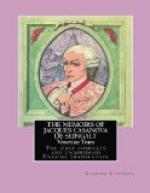The painters of high renown, all those whose works proclaim genius, have excelled in the delineation of the beautiful; but how small is their number compared to the vast craved who have strained every nerve to depict beauty and have only left us mediocrity!
If a painter could be dispensed from making his works beautiful, every man might be an artist; for nothing is easier than to fashion ugliness, and brush and canvas would be as easy to handle as mortar and trowel.
Although portrait-painting is the most important branch of the art, it is to be noted that those who have succeeded in this line are very few. There are three kinds of portraits: ugly likenesses, perfect likenesses, and those which to a perfect likeness add an almost imperceptible character of beauty. The first class is worthy only of contempt and their authors of stoning, for to want of taste and talent they add impertinence, and yet never seem to see their failings. The second class cannot be denied to possess real merit; but the palm belongs to the third, which, unfortunately, are seldom found, and whose authors deserve the large fortunes they amass. Such was the famous Notier, whom I knew in Paris in the year 1750. This great artist was then eighty, and in spite of his great age his talents seemed in all their freshness. He painted a plain woman; it was a speaking likeness, and in spite of that those who only saw the portrait pronounced her to be a handsome woman. Nevertheless, the most minute examination would not have revealed any faithlessness to the original, but some imperceptible touches gave a real but indefinite air of beauty to the whole. Whence does that magic art take its source? One day, when he had been painting the plain-looking “Mesdames de France,” who on the canvas looked like two Aspasias, I asked him the above question. He answered:—
“It is a magic which the god of taste distils from my brains through my brushes. It is the divinity of Beauty whom all the world adores, and which no one can define, since no one knows of what it consists. That canvas shews you what a delicate shade there is between beauty and ugliness; and nevertheless this shade seems an enormous difference to those unacquainted with art.”
The Greek painters made Venus, the goddess of beauty, squint-eyed, and this odd idea has been praised by some; but these painters were certainly in the wrong.
Two squinting eyes might be beautiful, but certainly not so beautiful as if they did not squint, for whatever beauty they had could not proceed from their deformity.




